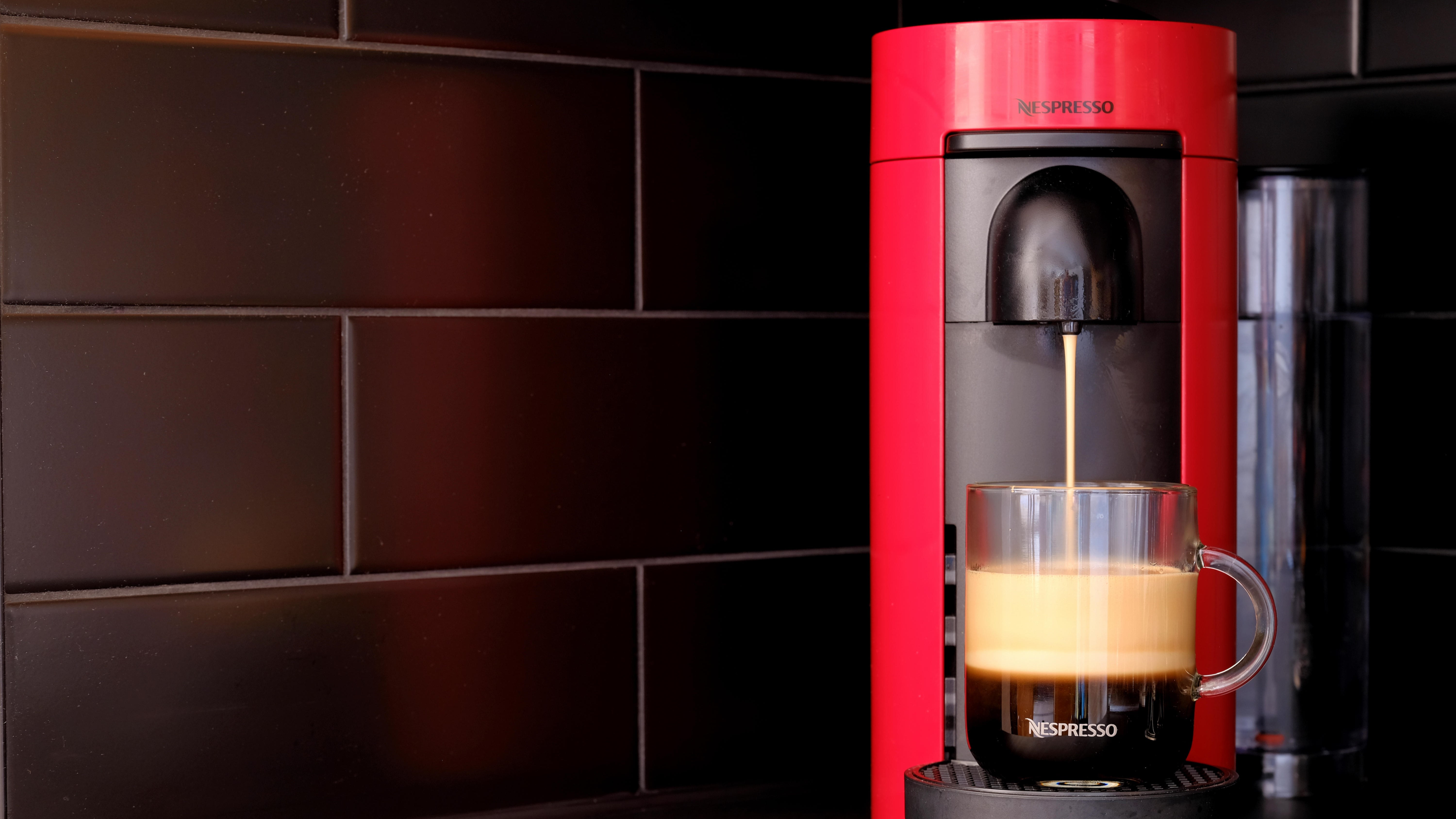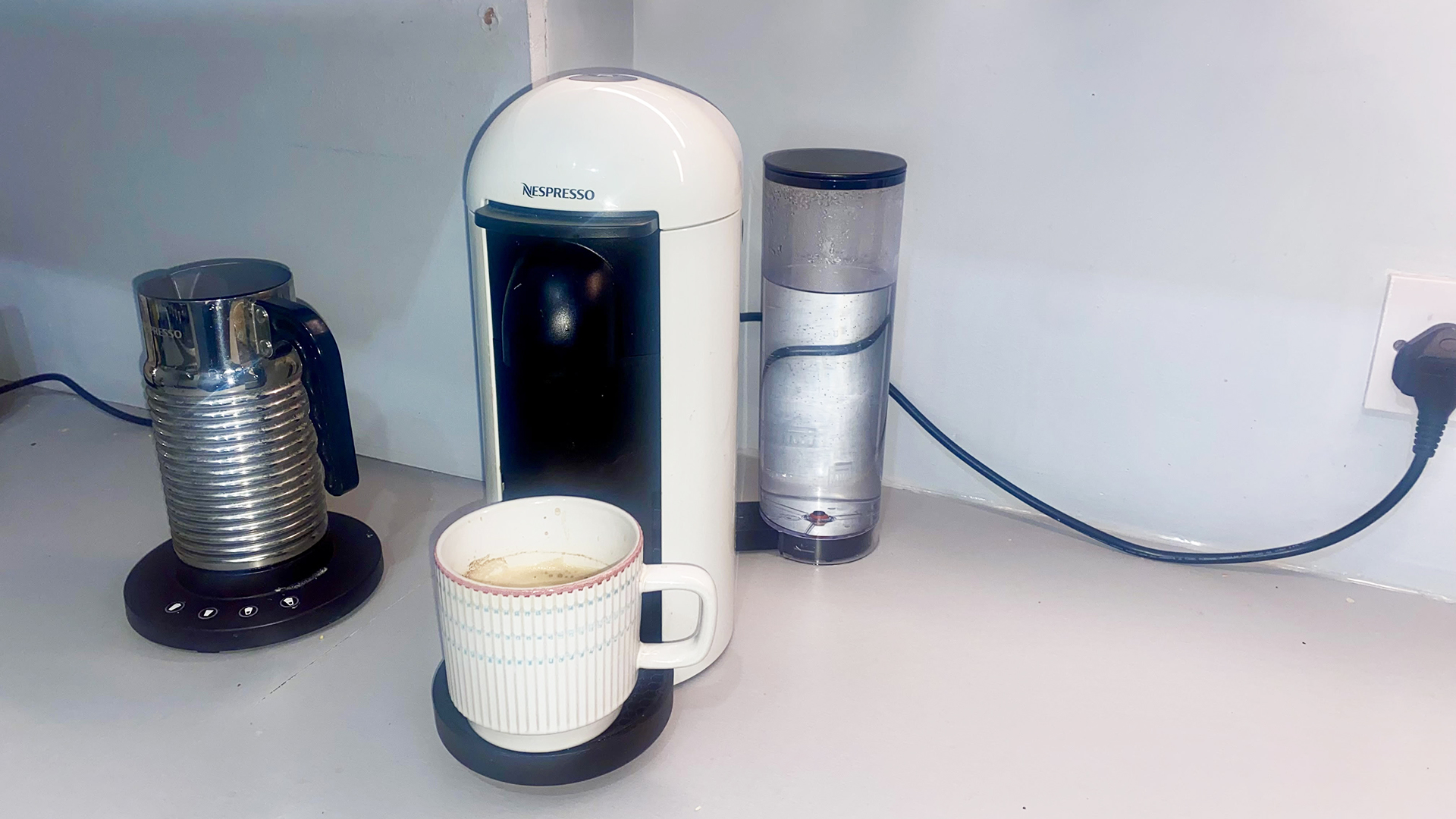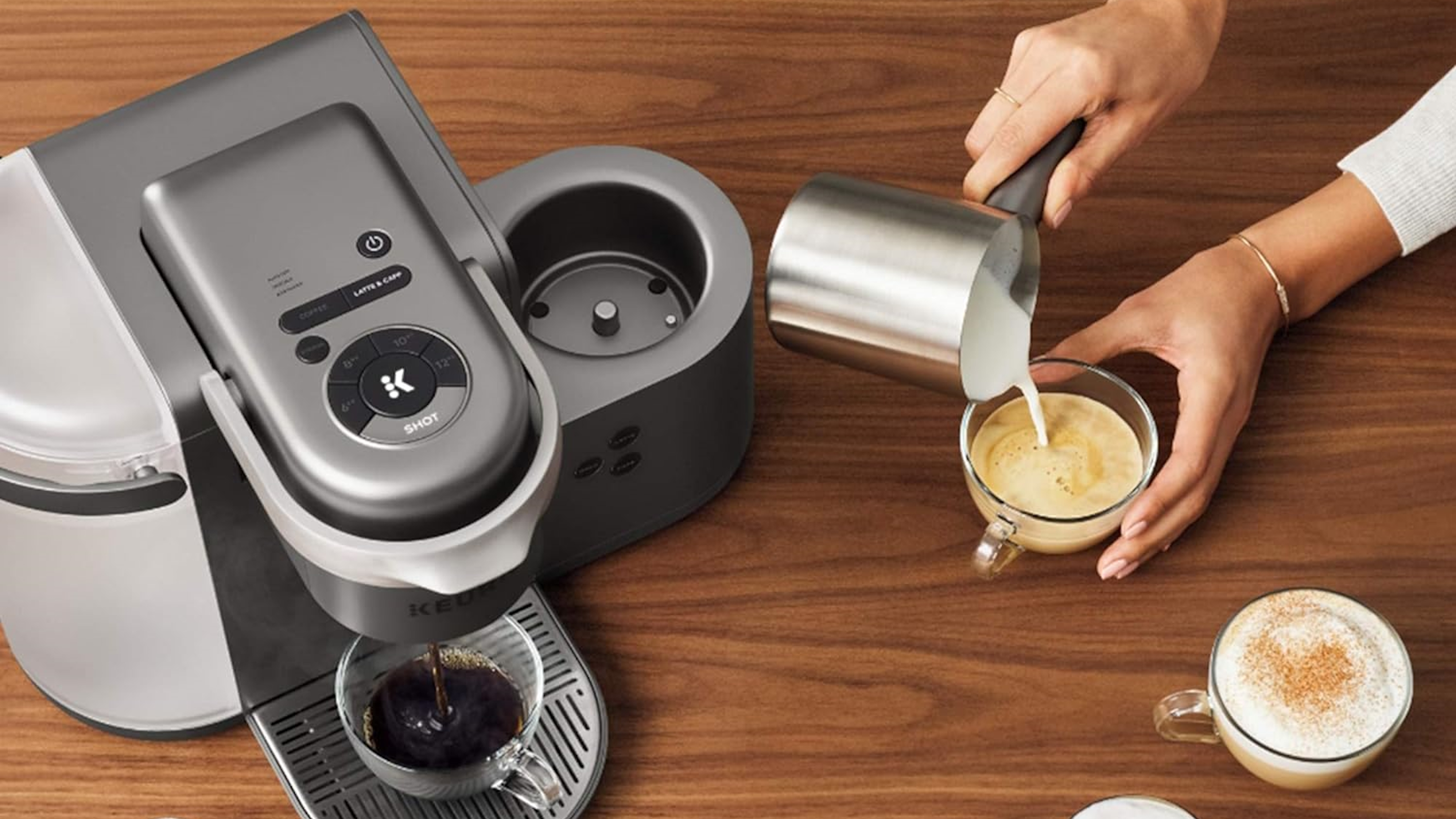
If you're like us and care about coffee, a single serve coffee maker could be one of the best things you'll ever buy. These days, they're among the best coffee makers around.
The majority of the best Keurig coffee makers, and Nespresso machines, are designed to make a single coffee, although some models blur that a little bit by enabling you to make twin espressos, really massive single serves or a carafe. But whichever model you buy, there are some big benefits to single serve. Here's what you need to know.
We also caught up with coffee expert Lydia Sims, Operations Director and Procurement Director at Pearl Lemon, to give you the full lowdown on the pros and cons of single serve coffee makers.
What is a single serve coffee maker?
A single serve coffee maker is designed to produce one cup of coffee at a time instead of an entire jug of the stuff. That means every coffee you have is made fresh – no more coffee going sour on a hotplate – and it means you're not wasting coffee, water or energy by making and heating more than you need. But there are other benefits too.
What kinds of single serve coffee makers can I buy?
There are two main kinds: coffee makers that use coffee pods, and coffee makers that use coffee beans or ground coffee. Pod coffee machines are designed for convenience, with Nespresso and Keurig being the two main players.
You'll often see coffee makers described as bean-to-cup: that means you fill them with coffee beans and they grind the beans on demand whenever you want a coffee. That means the freshest possible coffee, but it does mean quite a lot of noise with each cup. The Tchibo Coffee Maker and the Cuisinart Single Serve Coffee Maker are both strong models available at Amazon.
Some single serve coffee machines also have a milk reservoir to automatically make lattes and other milky coffees. Others may have a steam wand so you can froth your milk manually. And some don't have any milk-related features at all.

What are the pros and cons of pod single serve coffee makers?
Pros
Pod coffee machines may differ in the specific pods they use (Nespresso pods, Tassimo T-discs, and Keurig K-cups are all available at Amazon) but they all work in the same way: they pass hot water through a pre-packed pod, disc or cup to make your drink.
The big benefit here is convenience. "Single serve machines are incredibly convenient, allowing users to make a cup of coffee with minimal effort," says Sims. Essentially, pop in a pod and you're good to go, and when you're done you can either bin them or recycle the pod. You can instantly switch between different drinks, from normal coffee to decaf or from coffee to hot chocolate, simply by putting a different kind of pod in the machine. With ground or bean to cup coffee makers you don't have that flexibility unless you buy a model that can hold two kinds of coffee at once.
Pod-based coffee machines are fairly simple mechanically speaking, and that means they're often extremely cheap – even when they're made by luxury brands. Many pod-based coffee machines are well under $150 with some models below $50. That's a fraction of what you'd pay for a bean to cup machine. The same simplicity means that pod-based machines don't get very dirty, and they're extremely easy to clean.
Variety and consistency are also strong pros for single serve machines, according to Sims. Pod machines especially "offer a wide variety of coffee flavors and types including specialty coffees and flavored blends," she explains. And, as each pod is pre-measured, you can expect consistency within each cup.
Cons
The downsides are that in terms of cost per cup, pods typically cost more than buying ground coffee or coffee beans. And while manufacturers are much more conscious about recycling these days, those little pods do have an environmental footprint – especially if they're plastic-packed.
This is certainly something to consider if you're planning on buying a pod coffee machine as a long-term investment. "Over time, the cost of using single-serve machines may add up compared to other brewing methods," Sims explains. Pod machines are cheaper as an initial purchase, but if the plan is for it to be the primary coffee machine for years to come, it may end up costing more down the line.
What are the pros and cons of ground coffee single serve coffee makers?
Ground coffee machines sit at the mid-point of the coffee machine market: they're a little more complex than pod machines but they come closer to that true barista flavor without the cost and complexity of bean to cup machines. Instead of a pod you put ground coffee into the machine, either into a filter basket on top or, in espresso-style machines, into a circular filter with a big handle on it immediately above the serving area. This is called a portafilter. Portafilters usually deliver the most authentic-tasting coffee but they can also be a little messy.
The benefits here are taste and cost: buying pre-ground coffee (or buying your own beans and grinding them in a separate grinder) gives you more coffee for your cash, and a good quality machine will make great-tasting coffee. And some models are exceptionally cheap: for example at the time of writing you can pick up a BLACK+DECKER single serve ground coffee machine for as little as $25.
What are the pros and cons of single serve bean to cup machines?
When it comes to taste, you can't get better than freshly ground beans. But to do it well requires some pretty solid engineering, and as a result you can expect to pay significantly more for a coffee machine that grinds beans fresh for every serve. The results are great but some models can be very loud – not great if you're an early riser and the rest of your household doesn't want to be – and more complexity means more bits to clean.

What features should you look for in a single serve coffee maker?
That depends on what kind of coffee you like to make. Pod-based coffee machines are the most flexible, with pods available for every imaginable kind of beverage; ground coffee makers are for coffee only, as are bean to cup machines.
If you're considering a pod-based machine, check the price of the pods you're likely to be using – the prices do differ between different types of pod – and that you can recycle the pods or cups locally. If not, consider a machine that can use "soft pods": instead of plastic they use fabric that's more like tea bags and much easier to recycle. For ground coffee machines, reusable filters are common and better than disposable ones.
Some, but not all, single serve coffee machines have their own powerful heating elements that can have your coffee ready from a cold start in less than a minute. Fast heat-up times are a selling point so be wary of any machine that doesn't mention it.
How much coffee do you drink daily? If like us you're mainlining caffeine all morning you might be best choosing a machine with a larger water reservoir: all those single serves soon add up and a later capacity means fewer refill trips to the sink.
If you like milky drinks such as lattes, flat whites or cappuccinos, a machine with a built-in milk frother can make them much easier to make – but make sure you clean the milky bits daily to avoid a build-up of unpleasant residues.
More expensive machines come with more features and more customization, which is great if you take your coffee really seriously but it does add extra expense to the asking price. Similarly some machines are multi-function, enabling you to switch from pods or k-cups to filtered ground coffee or even beans; that too means more complexity and more money.
How to buy a single serve coffee machine
This is an area where it really pays to shop around: coffee machines get deep discounts during Black Friday, Prime Day, the holiday sales and pretty much all year round too, so you can save yourself quite a lot of money by using price checking websites and keeping an eye on our deals page to bag yourself a bargain.
We'd also strongly recommend that you read our reviews before deciding which one you're going to buy. Of course we would say that, but reviews tell you things that no advert will – whether that's a noise level that makes a tractor seem quiet by comparison, a milk frother that's really hard to clean or machine that demands you take it to bits every morning when you're at your most bleary-eyed and seriously craving caffeine.
Verdict: Should you buy a single serve coffee maker?
Single serve machines are best suited to coffee drinkers who love convenience. Compared to other coffee makers, they're incredibly quick and easy to use. And, if customization is important to you, a milk frother can turn simple coffees into milky drinks (see 8 easy barista coffees you can make with a Nespresso).
Saying that, they're usually quite simple machines, and don't offer the same level of customization as espresso machines or the taste quality of pour over coffee. But, with the amount of coffee pods and grounds on offer these days, there's certainly enough choice to find a single serve coffee flavor that suits you.







